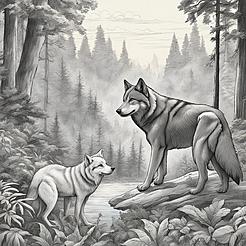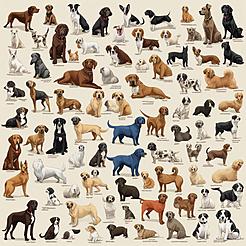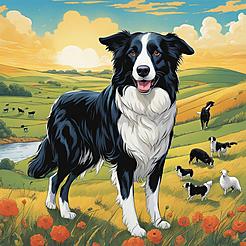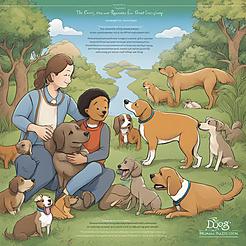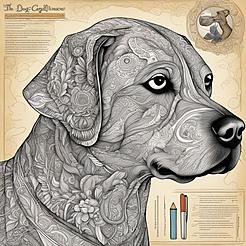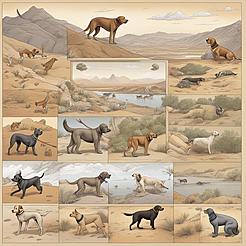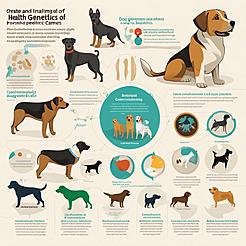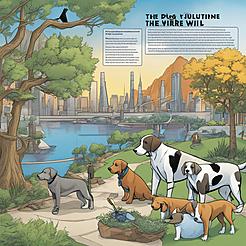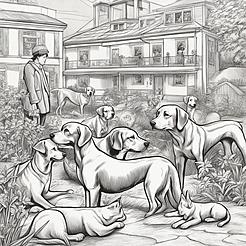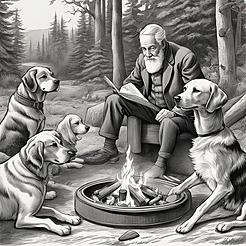 henrydjacob
henrydjacob- Chapter
- 2024-04-15

In the ever-evolving tapestry of canine history, the chapter of "Canine Evolution in the Modern World" unfolds before us, offering a panoramic view of the continued transformation of dogs amidst the complexities of our contemporary society. As we embark on this riveting exploration, we are poised to delve into the intricate web of challenges and opportunities that shape the future of canine populations, reflecting on the enduring legacy of human influence and the lessons of natural selection that have guided their journey thus far.
The modern world stands as a kaleidoscope of change, where dogs navigate a landscape shaped by technological advancements, shifting societal norms, and environmental transformations. In this dynamic milieu, the evolution of dogs unfolds as a nuanced interplay between tradition and innovation, resilience and vulnerability, as they adapt to the ever-changing tapestry of human existence.
One of the defining characteristics of canine evolution in the modern world lies in the realm of companionship. As dogs transition from their historical roles as working partners to cherished companions, their evolutionary trajectory takes on new dimensions. The bond between humans and dogs deepens, transcending mere utility to embrace emotional and psychological connections that enrich both species. This shift mirrors the evolving dynamics of our society, where dogs are valued not only for their physical prowess but also for the intangible qualities of loyalty, empathy, and unwavering devotion that define the essence of the human-canine bond.
Moreover, the modern world presents a myriad of challenges and opportunities that shape the genetic destiny of dogs. With the rise of globalization and interconnectedness, canine populations are exposed to a diverse array of genetic influences, fostering both genetic diversity and potential vulnerabilities. The rapid pace of urbanization and environmental changes pose new challenges for dogs, requiring them to adapt to novel stressors and ecological pressures that test their resilience.
In the realm of health and genetics, the modern world offers a platform for advancing our understanding of canine well-being. Through cutting-edge research and genetic technologies, we gain unprecedented insights into the genetic underpinnings of canine health, paving the way for targeted interventions and preventive measures to safeguard the well-being of our canine companions. From precision medicine approaches to personalized nutrition plans, the modern world heralds a new era of tailored care that seeks to optimize the health and longevity of dogs across diverse breeds.
As we contemplate the future of canine populations in the modern world, we are confronted with ethical considerations that demand our attention. The legacy of selective breeding, while instrumental in shaping the diverse array of dog breeds we know today, also raises questions about the balance between breed standards and canine well-being. In a world where designer breeds and genetic manipulation loom large, we are called to reflect on the responsibilities that come with shaping the genetic destinies of dogs, ensuring that our choices uphold the principles of ethical breeding and compassionate stewardship.
In the tapestry of canine evolution, the chapter of "Canine Evolution in the Modern World" serves as a poignant reminder of the enduring bond between humans and dogs, transcending time and space to illuminate the shared journey of two species intertwined by destiny. As we navigate the complexities of the modern world, guided by the lessons of natural selection and the profound influence of human companionship, we stand at a crossroads where the future of canine populations hangs in the delicate balance of progress and preservation.
References:
- Ostrander, Elaine A., and Anatoly Ruvinsky. "The Genetics of the Dog." CABI, 2012.
- Schoenebeck, Jeffrey J., and Elaine A. Ostrander. "The genetics of canine skull shape variation." Genetics 193.2 (2013): 317-325.
